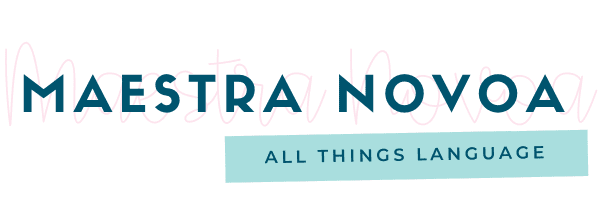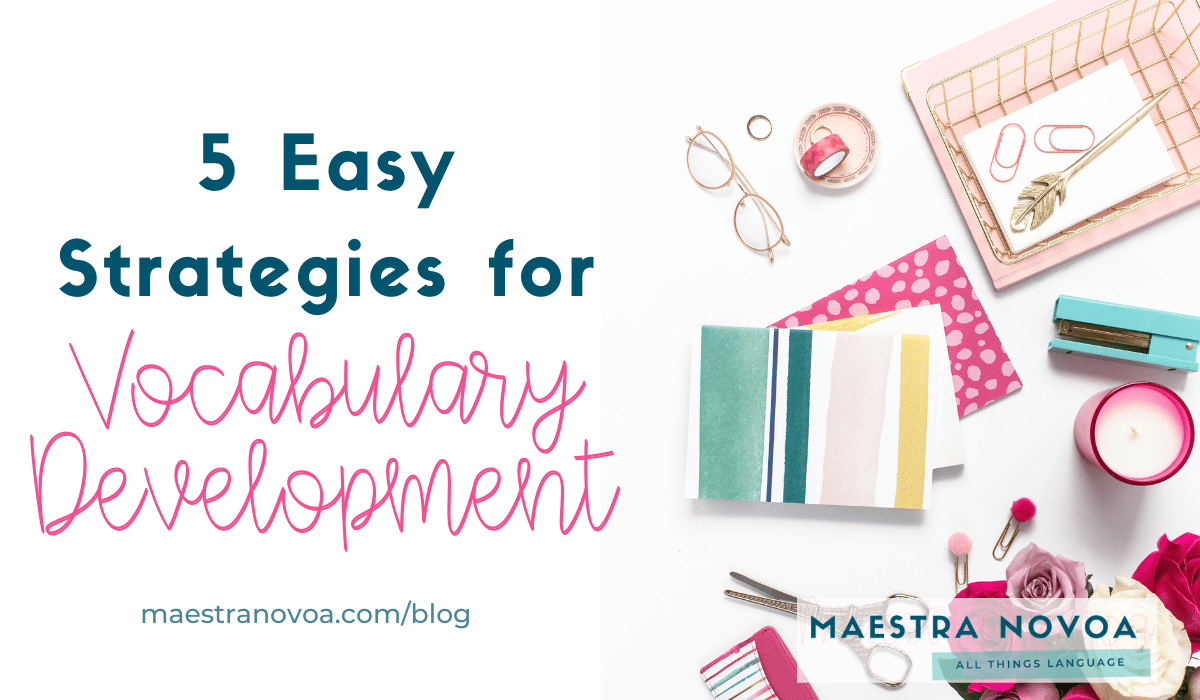These easy vocabulary strategies will be a breeze to implement in all content areas no matter what grade you teach. Imagine this: you tell your class to write three sentences on what they learned today, but when you go to read them 5 of the 24 of them actually used the vocabulary word you were hoping for. Ouch….but no worries, you are not alone! This has happened to me after getting so hyped about a certain vocabulary word and then no one knows it by the end of class. HUGE BUMMER! Keep reading to learn about 5 easy strategies for vocabulary development to implement tomorrow!
I want students to actually use the vocabulary words I focus on to convey what they learned. I have tried so many different ways, observed other teachers (thankfully to co-teaching!), and studied various vocabulary strategies. These 5 ways I am about to share with you have made a big difference in my classroom and they are so easy to implement! I dare you to pick one and plan it into your lesson.
1. Vocabulary Visuals
As straightforward as this one sounds, there is a little bit more to it! Visuals are great for ALL learners, but they must be used correctly. I repeat THEY MUST BE USED CORRECTLY. What I mean is to use clear images that are not overly distracting. If there is too much going on, the vocabulary word can be easily lost!
Check out these visual examples for isolate:
The first example shows a child who is isolated however, it also shows light bulbs and a box without a clear indication of “isolate”. EL students especially find these types of visuals confusing because they aren’t sure which part to focus on. The second picture is better because of the arrow and the two groups of people. A simple arrow goes a long way.
2. Find a Synonym
Finding a synonym is a fun one to do with the whole class! Give the students the definition of the word and see if anyone knows any synonyms. They can annotate in their notes, readings, and writings. The native language students in your class will definitely come in hand on this one. When this word is revisited and talked about, make sure to keep asking for a synonym. You can think of hitting two birds (the two words) with one stone with this strategy.
P.S. Baker, Simmons, & Kame’enu write that “vocabulary is a strong indicator of student success (1997).” Let’s help students be more successful and build their vocabulary!
3. Focused Words for Vocabulary
The next strategy for vocabulary development is having a set of focused words. Giving students too many words at once can be very overwhelming. You can probably pick out A LOT of vocabulary words from a unit, but it’s very important to have a smaller setlist of focused words. Going deep in meaning with a smaller set of words will be more beneficial than bombarding with a long list that won’t stick.
4. Quick Writing Prompts using Specific Vocab Words
The fourth strategy is to use vocabulary words in writing. There are so many ways to incorporate writing with the vocabulary words in all contents. Here is one example of math! Every Friday for students’ bell ringer, they use one specific vocabulary word in two sentences. By this point of the week, students have heard it, said it, read it, and wrote it (in their notes at least!). This is now their chance to go beyond regurgitating the definition and use it in context. Students also share out their writing so others can see other ways to use the word.
Here are a few other ways to use writing:
-Entry ticket by completing a sentence starter or writing their own with a vocabulary word, or two 😉
-Before they leave, have them flip their paper and use the word to answer their family’s question of “What did you do in school today?
-Explain a point of confusion using one of the words
5. Say the Vocabulary Word
I asked my 8th-grade advisory students if their teachers have them repeat words back to them. No surprise, all of them said “Nahhhh, that’s an elementary thing.” I am here to tell you that it is time to bring back the repetition of words!!!
I could go on about this forever…but in short, if a student can not say a word, how do you expect them to learn it, read it, and write it?! Have your students repeat vocabulary words after you. My EL students find it helpful to see the whole class repeating words because it’s an “everyone” thing to do.
Want to learn more about vocabulary and a few more strategies? This post I wrote goes over frontloading vocabulary. Just like this post, they are quick and easy methods to use! Another great post to check out is this snippet of Teaching the Critical Vocabulary of the Common Core by Marilee Sprenger.
Conclusion
There you have five strategies for vocabulary development you can start using tomorrow! Quick writing prompts and finding synonyms are quick ways to start focusing on vocabulary more in your class. Choose a small focused list of words so students aren’t overwhelmed. Incorporating clear visuals and having students repeat the word will be helpful for all learners. No matter which easy vocabulary strategy you end up using tomorrow (remember, I dared you to use one!), you are going to help your students become more successful.



3 Responses